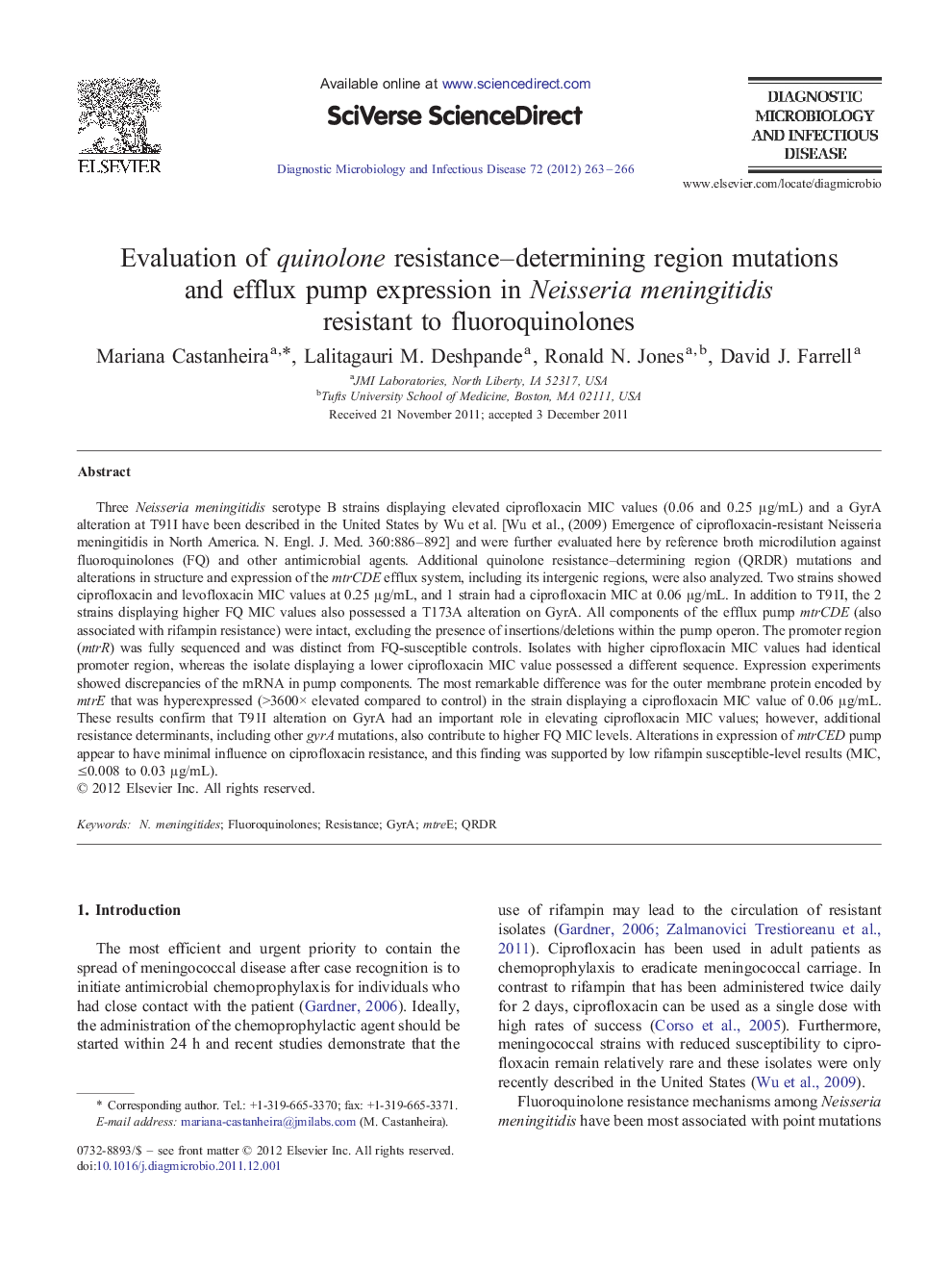| Article ID | Journal | Published Year | Pages | File Type |
|---|---|---|---|---|
| 3347271 | Diagnostic Microbiology and Infectious Disease | 2012 | 4 Pages |
Three Neisseria meningitidis serotype B strains displaying elevated ciprofloxacin MIC values (0.06 and 0.25 μg/mL) and a GyrA alteration at T91I have been described in the United States by Wu et al. [Wu et al., (2009) Emergence of ciprofloxacin-resistant Neisseria meningitidis in North America. N. Engl. J. Med. 360:886–892] and were further evaluated here by reference broth microdilution against fluoroquinolones (FQ) and other antimicrobial agents. Additional quinolone resistance–determining region (QRDR) mutations and alterations in structure and expression of the mtrCDE efflux system, including its intergenic regions, were also analyzed. Two strains showed ciprofloxacin and levofloxacin MIC values at 0.25 μg/mL, and 1 strain had a ciprofloxacin MIC at 0.06 μg/mL. In addition to T91I, the 2 strains displaying higher FQ MIC values also possessed a T173A alteration on GyrA. All components of the efflux pump mtrCDE (also associated with rifampin resistance) were intact, excluding the presence of insertions/deletions within the pump operon. The promoter region (mtrR) was fully sequenced and was distinct from FQ-susceptible controls. Isolates with higher ciprofloxacin MIC values had identical promoter region, whereas the isolate displaying a lower ciprofloxacin MIC value possessed a different sequence. Expression experiments showed discrepancies of the mRNA in pump components. The most remarkable difference was for the outer membrane protein encoded by mtrE that was hyperexpressed (>3600× elevated compared to control) in the strain displaying a ciprofloxacin MIC value of 0.06 μg/mL. These results confirm that T91I alteration on GyrA had an important role in elevating ciprofloxacin MIC values; however, additional resistance determinants, including other gyrA mutations, also contribute to higher FQ MIC levels. Alterations in expression of mtrCED pump appear to have minimal influence on ciprofloxacin resistance, and this finding was supported by low rifampin susceptible-level results (MIC, ≤0.008 to 0.03 μg/mL).
